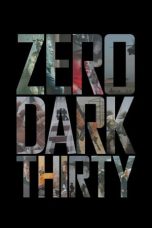- Source: September 1931 lunar eclipse
The Moon (2023)
2001: A Space Odyssey (1968)
12 Strong (2018)
Zero Dark Thirty (2012)
No More Posts Available.
No more pages to load.
A total lunar eclipse occurred at the Moon’s ascending node of orbit on Saturday, September 26, 1931, with an umbral magnitude of 1.3208. A lunar eclipse occurs when the Moon moves into the Earth's shadow, causing the Moon to be darkened. A total lunar eclipse occurs when the Moon's near side entirely passes into the Earth's umbral shadow. Unlike a solar eclipse, which can only be viewed from a relatively small area of the world, a lunar eclipse may be viewed from anywhere on the night side of Earth. A total lunar eclipse can last up to nearly two hours, while a total solar eclipse lasts only a few minutes at any given place, because the Moon's shadow is smaller. Occurring only about 8 hours before apogee (on September 27, 1931, at 3:40 UTC), the Moon's apparent diameter was smaller.
The Moon passed through the center of the Earth's shadow. This was the last central lunar eclipse of Lunar Saros 126.
Visibility
The eclipse was completely visible over east Africa, eastern Europe, and west, central, south, and southeast Asia, seen rising over west Africa, western Europe, South America, and northeastern North America and setting over east and northeast Asia and Australia.
Eclipse details
Shown below is a table displaying details about this particular solar eclipse. It describes various parameters pertaining to this eclipse.
Eclipse season
This eclipse is part of an eclipse season, a period, roughly every six months, when eclipses occur. Only two (or occasionally three) eclipse seasons occur each year, and each season lasts about 35 days and repeats just short of six months (173 days) later; thus two full eclipse seasons always occur each year. Either two or three eclipses happen each eclipse season. In the sequence below, each eclipse is separated by a fortnight. The first and last eclipse in this sequence is separated by one synodic month.
Related eclipses
= Eclipses in 1931
=A total lunar eclipse on April 2.
A partial solar eclipse on April 18.
A partial solar eclipse on September 12.
A total lunar eclipse on September 26.
A partial solar eclipse on October 11.
= Metonic
=Preceded by: Lunar eclipse of December 8, 1927
Followed by: Lunar eclipse of July 16, 1935
= Tzolkinex
=Preceded by: Lunar eclipse of August 14, 1924
Followed by: Lunar eclipse of November 7, 1938
= Half-Saros
=Preceded by: Solar eclipse of September 21, 1922
Followed by: Solar eclipse of October 1, 1940
= Tritos
=Preceded by: Lunar eclipse of October 27, 1920
Followed by: Lunar eclipse of August 26, 1942
= Lunar Saros 126
=Preceded by: Lunar eclipse of September 15, 1913
Followed by: Lunar eclipse of October 7, 1949
= Inex
=Preceded by: Lunar eclipse of October 17, 1902
Followed by: Lunar eclipse of September 5, 1960
= Triad
=Preceded by: Lunar eclipse of November 24, 1844
Followed by: Lunar eclipse of July 27, 2018
= Lunar eclipses of 1930–1933
== Saros 126
=It is part of saros series 126.
Lunar saros series 126, repeating every 18 years and 11 days, has a total of 70 lunar eclipse events including 14 total lunar eclipses. Solar Saros 133 interleaves with this lunar saros with an event occurring every 9 years 5 days alternating between each saros series.
First penumbral lunar eclipse: 18 July 1228
First partial lunar eclipse: 24 March 1625
First total lunar eclipse: 19 June 1769
First central lunar eclipse: 11 July 1805
Greatest eclipse of the lunar saros 126: 13 August 1859, lasting 106 minutes.
Last central lunar eclipse: 26 September 1931
Last total lunar eclipse: 9 November 2003
Last partial lunar eclipse: 5 June 2346
Last penumbral lunar eclipse: 19 August 2472
1901-2100
15 September 1913
26 September 1931
7 October 1949
18 October 1967
28 October 1985
9 November 2003
19 November 2021
30 November 2039
11 December 2057
22 December 2075
1 January 2094
= Half-Saros cycle
=A lunar eclipse will be preceded and followed by solar eclipses by 9 years and 5.5 days (a half saros). This lunar eclipse is related to two total solar eclipses of Solar Saros 133.
See also
List of lunar eclipses and List of 21st-century lunar eclipses
References
External links
Saros series 126
1931 Sep 26 chart Eclipse Predictions by Fred Espenak, NASA/GSFC







